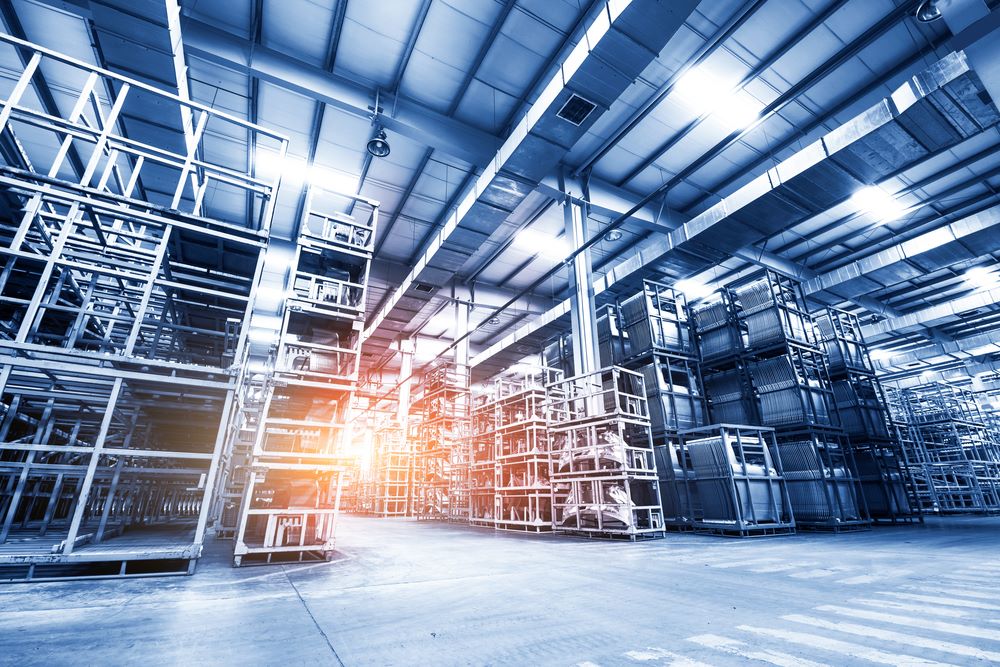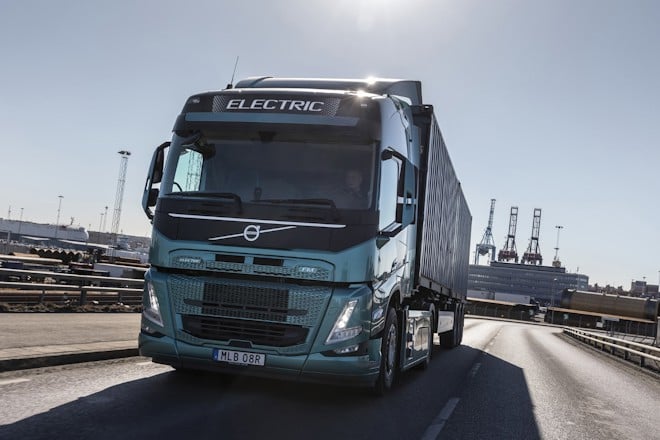Climate change is producing a cascade of accelerating impacts – and they each pose a real and growing threat to global development, writes freelance researcher Gordon Feller. Consider this one indicator: In 2020, natural disasters such as hurricanes and wildfires produced estimated losses of US$210bn worldwide, about 60% of which were uninsured. The IPCC’s “Special Report on Global Warming of 1.5°C” clearly advises that those impacts may be more frequent and severe in the next decades unless the global response is strengthened, in terms of sustainable development and poverty eradication.
Climate events represent the greatest threat to the development gains achieved in Latin America and the Caribbean, according to the non-profit Global Center on Adaptation. It estimated that by 2050, 17 million people in the region could be displaced and 1.6% of GDP lost due to climate-related events.
Ports are inherently vulnerable to the effects of climate change. Rising sea levels, storm surges, hurricanes, coastal erosion – these are just a few of the climate-related threats that have the potential to produce ever-more-frequent and ever-more-devastating impacts on port infrastructure and operations.
Because of the central role of maritime transport in today’s global economy – more than 80% of trade moves by sea – the impacts of a major climate event can reverberate far beyond the port itself, disrupting supply chains and causing shortages and price increases.
Ports at high risk
In 2020, “The Economist” hired a consulting firm to assess some 340 of the largest ports around the globe to get a sense of their exposure to six types of climate-related events. The analysis found that 55% of global trade passes through ports, which have a high risk of at least one type of event. In addition, close to 8% of trade in these ports was vulnerable to three or more climate hazards.
Although some of the world’s largest ports have fortified themselves, many ports are unprepared for major climate events, according to an analysis undertake by The Economist magazine. Many have yet to perform climate risk assessments; institute proper procedures; make contingency plans. Aging infrastructure is sometimes to blame. Financing is another common hurdle, especially in developing countries.
Given the magnitude and urgency of climate-related threats, ports must scale up preparedness and make their physical, operational and environmental infrastructure more resilient. Resilience refers to the ability to handle adverse circumstances, to be nimble enough to respond and recover and adapt and move forward. That ability takes on paramount importance when it comes to climate change.
Port developers and operators must anticipate potential climate impacts and make smart investments to protect vulnerable port assets, as well as local ecosystems and populations. Investing early in adaptation will reduce the risks and costs associated with climate-related impacts and prolong the life of a port’s assets and services. The costs of failing to act can be catastrophic.
Action plan
Port developers and operators must create an action plan to build resilience and reduce the adverse consequences of climate-related events in and around port facilities. The task that lays ahead for ports: Assessing climate risks; identifying/monitoring appropriate actions and investments to tackle them. Work is underway to gather the information and analysis which makes it possible to better understand the climate context of any given port project; to develop a risk assessment; to formulate adaptation measures; and to establish monitoring and evaluation procedures.
Climate change is an issue ports can no longer afford to ignore. A growing chorus of leaders are making the case that it’s time to support port developers and operators who are incorporating climate adaptation measures – since this is both a business-wise decision and an opportunity for new development.
Risk levels
The very first step toward making a port project more resilient to climate change is to determine the level of risk. A thorough risk assessment allows decision-makers to determine whether they may need to adapt or modify a project – in order to take into account climate change impacts.
Risk exists at the intersection of hazard, exposure and vulnerability. A risk assessment considers three key factors:
- What climate hazards have occurred or are likely to occur in the area in and around the port?
- What structures, ecosystems or populated areas might be close to or in the path of those hazards?
- How susceptible are these exposed elements to adverse impacts in the event of a climate hazard?
Risk arises where these three factors intersect. The higher the level of hazard, exposure or vulnerability, the higher the risk; conversely, risk decreases if all three factors are not present. For example, a river in the area may tend to overflow every year during the rainy season, presenting an annual hazard, but if a building at the port is not close to the river (and therefore is not exposed), or if it has been hardened to withstand flooding (and therefore is less vulnerable), the risk to that structure will be lower.
The risk assessment process starts by looking at the big picture. The purpose here is to determine the parameters and scope of the analysis. For the benefit of outside consultants, developers, financing institutions or others who may become involved in the project, the port should first put together some basic data, such as the type of project being planned, and the site’s geolocation coordinates.
Higher operating costs
Climate change is occurring at an accelerating pace. Rising seas, warmer temperatures and increasingly extreme weather events are already causing higher operating costs, business disruptions and lower asset values. To prepare for the consequences, countries and companies alike must step up their climate action now. As the European Commission’s President, Ursula von der Leyen, put it, the 2020s are the “make-or-break decade”.
The good news is that becoming resilient to climate-related hazards is a winning business strategy that brings with it other benefits, such as greater competitiveness and reputational gains. While the cost of investment is high, so are the potential returns. According to an analysis conducted by the Global Center on Adaptation, the Latin America and Caribbean region’s need for investment in resilient energy, water and transportation infrastructure has been estimated at US$13bn per year until 2030, yet such an investment would deliver a net benefit of US$700bn. This type of investment, the report says, would help unlock the “triple dividend” of resilient infrastructure: avoided losses, economic gains, and social and environmental benefits.
While ports are naturally exposed to climate-related hazards, the level of exposure differs significantly from location to location, and the degree of vulnerability depends heavily on infrastructure design and specifications. A site- and asset-specific risk assessment will allow port developers and operators to identify optimal adaptation measures and prioritise investments. Such an assessment is the starting point to take advantage of the triple dividend that climate resilience can deliver.
Financial tools such as comparative financial analysis, cost-benefit analysis and metrics on time effectiveness or associated benefits can provide further clarity and yield insight into which adaptation actions should take priority. These, together with a monitoring and evaluation plan, can help port operators and developers mitigate risks and reap adaptation opportunities, making their investments more resilient today and into the future.
Degrees of vulnerability
While ports are naturally exposed to climate-related hazards such as storm surge or sea level rise, the level of exposure differs significantly from location to location, and the degree of vulnerability depends heavily on infrastructure design and specifications. A site-specific and asset-specific risk assessment allows port developers and operators to identify adaptation needs and prioritise investments in measures that enhance resilience. Such an assessment is the starting point to take advantage of the triple dividend that climate resilience can deliver. There are some keys to helping port developers and operators create an action plan to build resilience – and reduce the adverse consequences of climate-related events in and around port facilities.
It is high time for the port sector to share best practices in ways which enable them to better tackle climate change-related challenges — while increasing their joint collaboration.
APPENDIX 1: Defining some key words
Adaptation: In human systems, the process of adjustment to actual or expected climate and its effects, in order to moderate harm or exploit beneficial opportunities. In natural systems, the process of adjustment to actual climate and its effects; human intervention may facilitate adjustment to expected climate and its effects.
Adaptive capacity: The ability of systems, institutions, humans and other organisms to adjust to potential damage, to take advantage of opportunities, or to respond to consequences.
Climate change: Climate change refers to a change in the state of the climate that can be identified (e.g., by using statistical tests) by changes in the mean and/or the variability of its properties, and that persists for an extended period, typically decades or longer.
Climate scenario: The simulated response of the climate system to a scenario of future emission or concentration of greenhouses gases (GHGs) and aerosols, generally derived using climate models.
Exposure: The presence of people, livelihoods, species or ecosystems, environmental services and resources, infrastructure, or economic, social, or cultural assets in places that could be adversely affected.
Hazard: The potential occurrence of a natural or human-induced physical event or trend that may cause loss of life, injury, or other health impacts, as well as damage and loss to property, infrastructure, livelihoods, service provision, ecosystems and environmental resources.
Impacts: Effects on natural and human systems. These refer to effects on lives, livelihoods, health, ecosystems, economies, societies, cultures, services, and infrastructure due to the interaction of climate changes or hazardous climate events occurring within a specific time period.
Representative Concentration Pathways (RCPs): Scenarios that include time series of emissions and concentrations of the full suite of GHGs and aerosols and chemically active gases, as well as land use/land cover. The term pathway emphasizes the importance of the trajectory taken over time to reach that outcome.
Resilience: The capacity of social, economic and environmental systems to cope with a hazardous event or trend or disturbance, responding or reorganising in ways that maintain their essential function, identity and structure, while also maintaining the capacity for adaptation, learning and transformation.
Resilient infrastructure: The ability of the asset to anticipate, absorb and recover from weather shocks and slow-moving changes as well as positively adapt and transform in the face of long-term stresses, changes and uncertainty induced by climate change.
Risk: The potential for adverse consequences of a climate-related hazard, or of adaptation or mitigation responses to such a hazard, on lives, livelihoods, health and wellbeing, ecosystems and species, economic, social and cultural assets, services (including ecosystem services), and infrastructure.
Sensitivity: The degree to which a system or species is affected, either adversely or beneficially, by climate variability or change.
Threshold: The magnitude or intensity that must be exceeded for certain reaction, phenomenon, result, or condition to occur or be manifested.
Vulnerability: The propensity or predisposition to be adversely affected. Vulnerability depends on the sensitivity to harm and the lack of capacity to cope and adapt.
APPENDIX 2: Using Indicators for Evaluating Risks
EXAMPLES OF MONITORING INDICATORS
- Degree of integration of climate change into development planning year
- Number of policies and coordination mechanisms explicitly addressing climate change resilience
- Number of financial mechanisms identified to support climate change adaptation
- Funding for climate-adapted construction and refurbishment.
- Number of installations with retrofitted flood resilience measures
- Number of new local jobs created
EXAMPLES OF EVALUATION INDICATORS
- Area of port lost due to coastal erosion per
- Days of service lost due to structural damages to infrastructure
- Losses of operating revenue in percentage per year due to extreme climate events
- Reduced work productivity due to heat stress, in percentage terms
- Percentage of area of ecosystem that has been disturbed or damaged
- Decline in fish habitats due to changes in sea temperature
- Decreased annual average fish catch as a result of temperature change
- Reduction of flood damage due to improved flood emergency preparedness and flood protection measures





